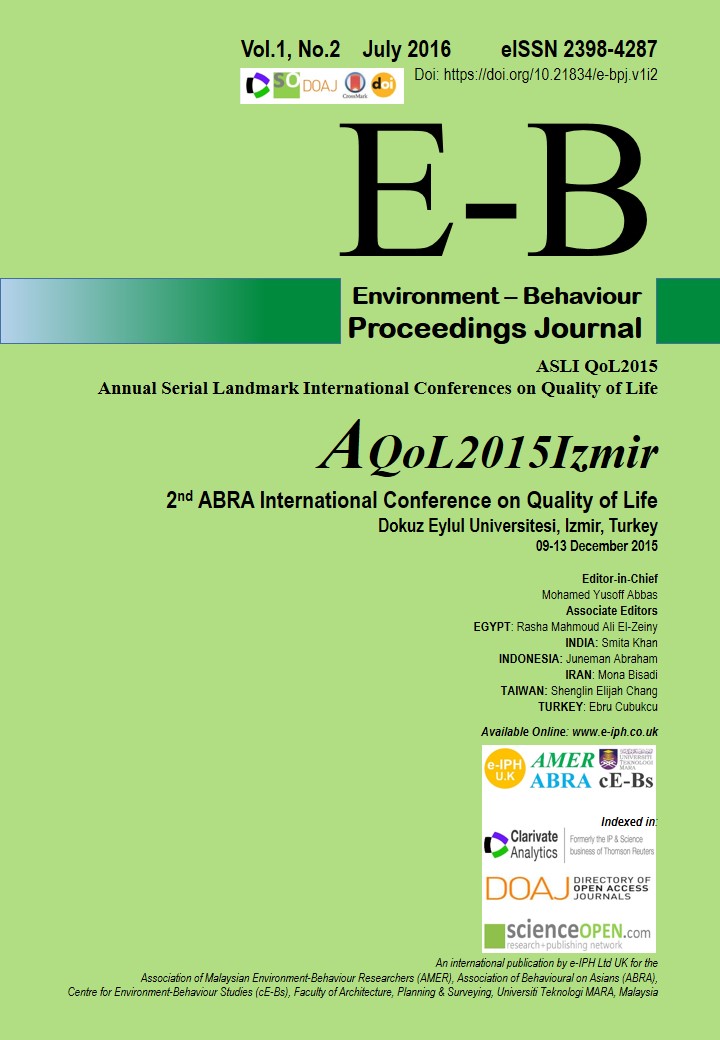Acceptance towards Goods and Services Tax (GST) and Quality of Life: Antecedent and outcome using partial least square method
DOI:
https://doi.org/10.21834/e-bpj.v1i2.252Keywords:
GST, Acceptance, Knowledge, Quality of LifeAbstract
The good and service tax (GST) in Malaysia was implemented in 2015 as a tax reform program to generate a stable source of revenue. This study explores the respondents' behaviour towards GST, a week post-implementation. The partial least square (PLS) modelling was used to establish the relationship between acceptance, knowledge and feelings towards GST as well as the household quality of life. There is a positive relationship between the antecedents and the quality of life. Acceptance of GST exerts a significant relationship towards feelings and quality of life. The study concludes that Malaysians, in general, accept GST that ensures a better quality of life in the future.
References
Ahmad, R., Ahmad, R., & Mohamad Alwie, S. (2015). Instilling Malaysian consumers' mind-set in accepting GST: An analysis on the effectiveness of communication used by the government. In M.H. Bilqin, H. Danis, E. Emir & C.K.M. Lau (Eds.), Innovation, finance, and the economy: Proceedings of the 13th Eurasia Business and Economics Society Conference (pp. 121-134). Switzerland: Springer International Publishing. DOI: https://doi.org/10.1007/978-3-319-15880-8_10
Anderson, J.C., & Gerbing, D.W. (1988). Structural equation modelling in practice: A review and recommended two-step approach. Psychological Bulletin, 103(3), 411-423. DOI: https://doi.org/10.1037/0033-2909.103.3.411
Asafu-Adjaye, J., & Mahadevan, R. (2002). The welfare effects of the Australian goods and services tax. The Singapore Economic Review, 47(1), 49-63. DOI: https://doi.org/10.1142/S0217590802000407
Cheung, C.M.K., & Lee, M.K.O. (2010). A theoretical model of intentional social action in online social networks. Decision Support Systems, 49(1), 24 -30. DOI: https://doi.org/10.1016/j.dss.2009.12.006
Chin, W.W. (1998). The partial least squares approach to structural equation modeling. In G.A Marcoulides (Ed.), In modern methods for business research (pp. 295-336). London: Lawrence Erlbaum Associates.
Grady, P. (1990). An analysis of the distributional impact of the goods and services tax. Canadian Tax Journal/Reveu Fiscale Canadienne, 38(3), 631-643. Retrieved from http://mpra.ub.uni-muenchen.de/13144.
Hair, Jr, J.F., Hult, G.T.M., Ringle, C., & Sarstedt, M. (2013). A primer on partial least square structural equation modeling (PLS-SEM). London: SAGE Publications, Incorporated.
Igbaria, M., Livari, J., & Maragahh, H. (1995). Why do individuals use computer technology? A Finnish case study. Information and Management, 29(5), 227-238. DOI: https://doi.org/10.1016/0378-7206(95)00031-0
Lau, Z.Z., Tam, J., & Heng-Contaxis, J. (2013). The introduction of goods and services tax in Malaysia: A policy analysis. Centre for Public Policy Studies, Asian Strategy & Leadership Institute.
Ministry of Finance (2013). Estimates of federal government's revenue for the year 2013.
Narayanan, S. (2014). The impact of the goods and services tax (GST) in Malaysia: Lessons from experiences elsewhere (A note). Singapore Economic Review, 59(2), 9-15. DOI: https://doi.org/10.1142/S021759081450009X
Palil, M.R., & Ibrahim, M.A. (2011). The impacts of goods and services tax (GST) on middle-income earners in Malaysia, World Review of Business Research, 1(3), 192-206.
Rafaqat, S. (2005). Redistributive impact of GST tax reform: Pakistan, 1990 – 2001. The Pakistan Development Review, 44(4), 841-862. DOI: https://doi.org/10.30541/v44i4IIpp.841-862
Sang, S. Lee, J.D., & Lee, J. (2010). E- government adoption in Cambodia: a partial least squares approach. Transforming Government: People, Process and Policy, 4(2): 138-157. DOI: https://doi.org/10.1108/17506161011047370
Sekaran, U., & Bougie, R. (2010). Research methods for business: A skill building approach (5thed.). London: John Wiley and Sons Ltd.
Shamsuddin, A., Meor Ruslan, M.I., Abd Halim, A., Zahari, N., & Mohamad Fazi, N. (2014). Educators' awareness and acceptance towards goods and services tax (GST) implementation in Malaysia: A study in Bandar Muadzam Shah, Pahang. International Journal of Business, Economics and Law, 4(1), 1-10.
World Health Organisation. (2016). WHO Quality of Life-BREF (WHOQOL-BREF). Retrieved October 10, 2015 from http://www.who.int/substance_abuse/research_tools/whoqolbref/en/
Downloads
Published
How to Cite
Issue
Section
License
Copyright (c) 2016 Arlinah Abd Rashid, Azlina Hanif, Rohana Kamaruddin

This work is licensed under a Creative Commons Attribution-NonCommercial-NoDerivatives 4.0 International License.





